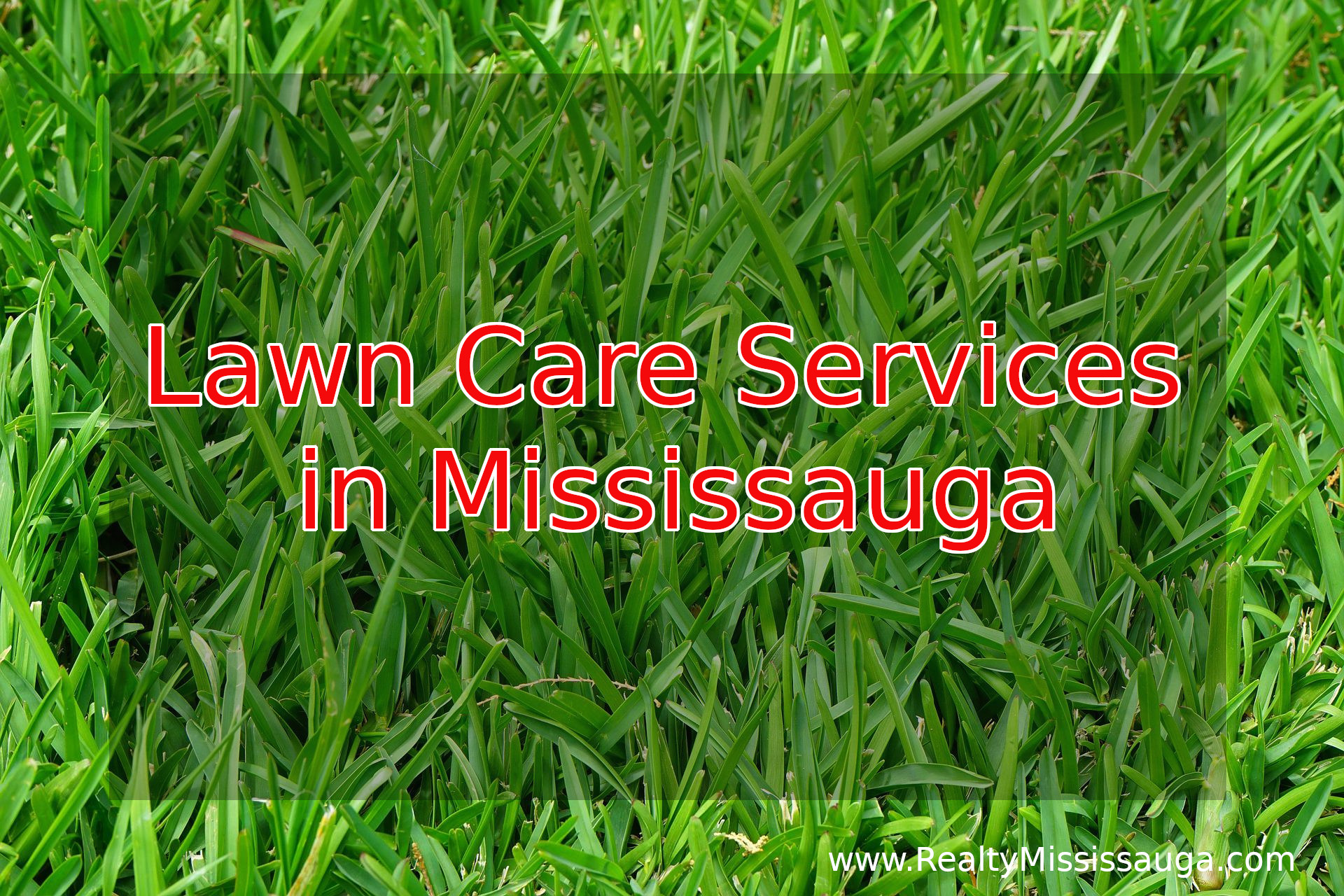Lawn care Services in Mississauga is all about maintaining the health, colour, and vitality of fields over the years. As part of yard care, we can get rid of pests and weeds, fertilize, test the soil, aerate it, plant seeds, water trees and shrubs deeply, and do deep root feeding.
A lawn care service is a skilled job that keeps a lawn healthy and makes it look better. They can include tasks like:
- Mowing
- Fertilizing
- Weed control
- Aeration
- Pest management
- Soil testing
- Seeding
- Deep root feeding for trees and shrubs
- Irrigation
Lawn care professionals take care of lawns in places like private houses, hospitals, schools, and business properties. They might also plant flowers and trim trees and bushes.
Every lawn care service has its own set of products, tools, techniques, and schedules, but the results they claim are the same.
Companies usually give customers a choice of “packages” that include treatment plans that will happen over the course of a year. Some lawn care services offer one-time treatments, and some renew your contract for another year.
However, you can stop your contract at any time and only pay for the visits you’ve already had. All of these are standard ways to treat your lawn, and you can do them all yourself if you want to avoid hiring someone.
Aeration
A core aeration method should be done on most lawns about every three years. A machine with half-inch-diameter metal tubes is rolled over your yard. The tubes go several inches into the grass to remove plugs of grass and soil and then place them on the surface.
The holes that were made let water, air, manure, and organic matter that turns into humus reach the roots. The holes let the earth loosen up, which makes it easier for roots to grow and improves the flow of water and air through the grass.
Aeration is usually an extra service that comes with lawn care plans because it takes a lot of work and costs more than $30 per 1,000 square feet of yard. A
n aeration machine, which looks like a cross between a lawn mower and a tiller, is something you can rent and do the job yourself. If you’ve never used one, ask the tool rental shop to show you how.
Planting seeds
Even though it can be pricey, seeding (or “over-seeding”) many gardens every fall is a good idea. You can fill in bare spots with new grass seed, make the lawn denser to keep weeds and bugs away, switch to a newer grass variety that is less likely to get diseases and bugs or switch to a better grass variety for the area.
For example, fine fescue can be planted where tall fescue and Kentucky bluegrass don’t do well because of the shade. Some lawn care companies will fill small areas for free, but they all charge for bigger jobs.
For those who want to do it themselves, make sure the seed touches the soil by raking the ground under the grass and adding a light layer of soil or compost on top of the seed as you spread it. Some lawn care services aerate the grass after they seed it.
Fertilizing plants
Adding fertilizer to your yard gives it extra nutrients that are good for its health. Depending on what your yard needs, most lawn care services say you should fertilize it three to six times a year. But most turfgrasses that are grown in gardens do best when they are fertilized in the fall.
There are three main types of fertilizer: synthetic, which releases quickly; synthetic, which releases slowly; and natural (organic), which releases slowly.
A fast-release fertilizer gives the grass a quick boost of nutrients, which makes the leaves grow and turn green quickly. But this rush of growth might take energy away from building strong roots.
If you use fast-release fertilizer on your yard five or six times a year, it might look good when the weather is nice, but at some point, the roots could become weak, and the grass could die.
For lawns, slow-release synthetic fertilizers provide nutrients more steadily and gradually. However, they don’t work right away—some formulations may not work for weeks until the weather is right or nutrients in the soil trigger them.
On the other hand, these fertilizers give grass a steady, smaller dose of nitrogen that lets it grow strong roots without suddenly switching its energy to leaf growth.
The third big group of fertilizer types is natural, slow-release fertilizers. This includes all types that are not made in a lab. Some examples are fish oil, dried blood, manure, and sewage that has been cleaned up.
These nutrients are sometimes called “organic,” but lawn care companies use this word broadly to get people to buy their products. It would be more true to say “natural, nonsynthetic” fertilizers.
All-natural fertilizers, like some synthetic slow-release fertilizers, need to be broken down by soil bacteria before grass plants can use them.
Natural fertilizers are more pricey because you might need to use four times as much of them as manufactured ones.
If you use fertilizer on your own, don’t think that more is better, especially if it’s a fake. Since synthetic fertilizer is mostly just salt, too much of it can “burn” your grass, and too much fertilizer also hurts the watershed.
Keeping the acidity of the soil
If your lawn’s acid balance (pH number) is off, adding a lot of fertilizer won’t help much. If the earth is too acidic or alkaline, your grass cannot use the plant food. The pH level of most types of grass grows best when it is slightly acidic, between 6.5 and 7.0.
Keeping the soil at the right acidity level may also help get rid of weeds since many unwanted plants do better at higher or lower pH levels than green grasses. Keeping the pH of the earth at a level that is good for turf grasses gives your grass an edge over weeds.
As needed, a lawn care company should check your soil’s pH level and add lime, which lowers acidity.
Controlling Weeds
To get rid of weeds, you can do a number of things:
Competition: The best way is to plant turfgrasses that drive out weeds. Weeds won’t grow in a thick, strong yard because they can’t keep up with the healthy plants. If you mow your yard right and plant seeds, you can get a lawn that is almost weed-free.
Pre-emergent herbicides: Herbicides that kill seed shoots can be used to get rid of crabgrass and poa annua. This is what most lawn care companies do.
Most types of pre-emergent herbicides should only be used on a field that has been seeded once the desired grasses have grown fully. If they are applied before the desired grasses have grown fully, the new grass will be killed or stunted.
One type of pre-emergent grass herbicide, which contains siduron, can be used on newly seeded grass. You can’t be sure where weeds will appear ahead of time, so pre-emergent herbicides need to be spread over large areas that look like they might have weed plants.
Some lawn care companies only treat lawns that have had weed problems in the past or just the weakest spots on lawns that have had weed problems in the past.
Post-emergent herbicides: After the plants have grown. There are post-emergent herbicides that kill green weeds like dandelions and clover without killing grasses that you want to keep.
However, no pre-emergent herbicides are widely used for these weeds. Some lawn care companies spray post-emergent herbicides on every yard to kill both big plants that can be seen and small plants that can’t be seen yet.
But many companies only use these herbicides on lawns that have had weed problems in the past or where weeds can be seen right now. Others only treat the parts of fields where weeds can be seen.
Physical Removal: If you have a small yard with few weeds, you can get rid of them by cutting their roots with an asparagus knife. A lot of yard care companies don’t offer this service because it takes a lot of work.
Natural death: Weeds die naturally. Let nature take its course if the trouble isn’t too big. In fact, once the weeds are big enough, that’s often the only way to get rid of them.
Whether you’re picking a company or a program from that company, remember that weeds are usually just plants and wildflowers that have grown in the wrong places. If you don’t mind a few stray plants (think of them as colourful accents!), you can escape some cost, trouble, and herbicide exposure.
Getting Rid of Insects: Every yard has some insects that are bad for it, and the weather and other things can make it so they can do damage.
Like weeds, many dangerous pests like it when it’s sunny. Widespread bugs are less likely to attack a thick, well-kept lawn, and most turfgrasses are pretty immune to most insect attacks.
Many lawn care services use poisons on all of their clients’ yards when insects are likely to do damage. It’s less likely that a company will be called back between visits, and customers will be less likely to be upset about losing parts of their fields for the season.
On the other hand, poisons might kill good bugs that eat bad bugs and other bad bugs. Earthworms, which help keep grass healthy in other ways, may also be hurt by insecticides.
Because of this, using a lot of insecticides on a yard can make it more likely to get pests again than before. From the community’s point of view, using insecticides on a large scale may also be bad for grass because it may cause insects to become resistant to the chemicals.
If you want to stop companies from using pesticides for no reason, tell them they need to use a targeted control method or agree not to use any pesticides at all. If a business says it will use chemicals, find out why and if it’s okay to skip it.
Controlling Disease
Fumes are the main cause of most lawn diseases. Lawns that have been over-fertilized, poorly watered, cut too short, or otherwise stressed are more likely to get diseases. Things like bad weather can make problems more likely.
Most of the time, lawns won’t have major disease problems. Most illnesses go away on their own, and by the time they are noticed, they have usually done all their damage. Most fields won’t benefit from fungicide treatment, and the chemicals are pricey, so people and lawn care businesses should use them sparingly.
Work You Still Have to Do
There are lawn care services that don’t cut lawns and the ones that do usually charge extra for it.
- A healthy garden needs to be mowed and watered correctly. Keep the grass short. Most grass should be kept at least 2½ to 3 inches tall.
- Cut the grass so that you only cut a third of the blade at a time.
- Keep your mower’s blades sharp so that you don’t tear the grass leaves, which turns them brown and makes them easy for bugs to get into.
- Cut the grass when it’s dry.
- Leave grass clippings on the lawn so they can break down and feed the soil, but break up any big groups.
- If you want to water your grass, wait until the leaves are almost dying. Your grass is in danger if you leave footprints on it.
- Give it about an inch of water every week to keep grass green in the summer. A rain gauge can help you do this.
Frequently Asked Questions (FAQs) – Lawn Care Services in Mississauga
1. What services do lawn care professionals typically offer?
Lawn care professionals in Mississauga offer a range of services including mowing, fertilizing, weed control, aeration, pest management, soil testing, seeding, deep root feeding for trees and shrubs, irrigation, and more. They may also engage in tasks such as planting flowers and trimming trees and bushes.
2. What are the common components of a lawn care package?
Most lawn care companies provide customers with different packages that include treatment plans over the course of a year. These packages may cover services like fertilization, weed control, aeration, and pest management. Customers can choose from one-time treatments or renew their contracts for an additional year.
3. Can I cancel my lawn care contract anytime?
Yes, customers can typically stop their lawn care contracts at any time. They are often only required to pay for the visits they have already received. This flexibility allows customers to opt-out if they decide to manage their lawn care independently.
4. Is aeration necessary for my lawn, and can I do it myself?
Aeration, which involves removing plugs of grass and soil to improve root growth, is usually recommended every three years. While it’s often included in lawn care plans, individuals can rent an aeration machine to do the job themselves. Guidance on usage can be obtained from tool rental shops.
5. What is the significance of seeding in lawn care?
Seeding, or overseeding, is beneficial for filling in bare spots, making the lawn denser, and switching to grass varieties resistant to diseases and bugs. Some lawn care companies offer free filling for small areas, but for DIY, it’s important to ensure seed-soil contact and consider aerating the grass afterward.
6. How often should I fertilize my lawn, and what types of fertilizers are available?
Fertilizing frequency varies, but most recommend three to six times a year, with fall being ideal for many turfgrasses. Fertilizers come in synthetic fast-release, synthetic slow-release, and natural (organic) slow-release types. Understanding the differences and applying the right type based on your lawn’s needs is crucial.
7. How does soil acidity affect my lawn, and how can I maintain the right pH level?
Maintaining the right soil acidity (pH) level, usually between 6.5 and 7.0, is crucial for grass health. Lawn care companies may check the soil’s pH level and add lime as needed to lower acidity. Keeping the pH right also aids in weed control, as many unwanted plants thrive at extreme pH levels.
8. What are effective ways to control weeds in my lawn?
Weed control methods include choosing turfgrasses that outcompete weeds, using pre-emergent and post-emergent herbicides, physical removal with tools, and allowing natural death. Understanding these methods and their implications can help in choosing the right approach for your lawn.
9. How do lawn care services handle insect infestations, and are pesticides always necessary?
Lawn care services often use pesticides to prevent insect damage, but it’s essential to consider targeted control methods to minimize harm to beneficial insects. Communicating preferences with the lawn care company and understanding the necessity of pesticide use can guide decision-making.
10. How do I prevent and control diseases in my lawn?
Proper lawn care practices, such as avoiding over-fertilization and maintaining adequate watering, help prevent diseases. Fungicides are usually reserved for severe cases, considering their cost and potential environmental impact. Lawn owners are encouraged to monitor their lawns and intervene as needed.
11. Do lawn care services include lawn mowing, or is it an additional service?
Not all lawn care services include lawn mowing, and those that do may charge extra for it. Regular mowing is essential for maintaining a healthy lawn, and homeowners are often responsible for this task, ensuring the grass is cut at the right height and with sharp blades.
12. What are some key tips for maintaining a healthy lawn on my own?
To maintain a healthy lawn, it’s important to mow and water correctly, keep the grass at the recommended height, cut only a third of the blade at a time, use sharp mower blades, cut the grass when it’s dry, leave clippings on the lawn, and water appropriately, especially during dry periods.




